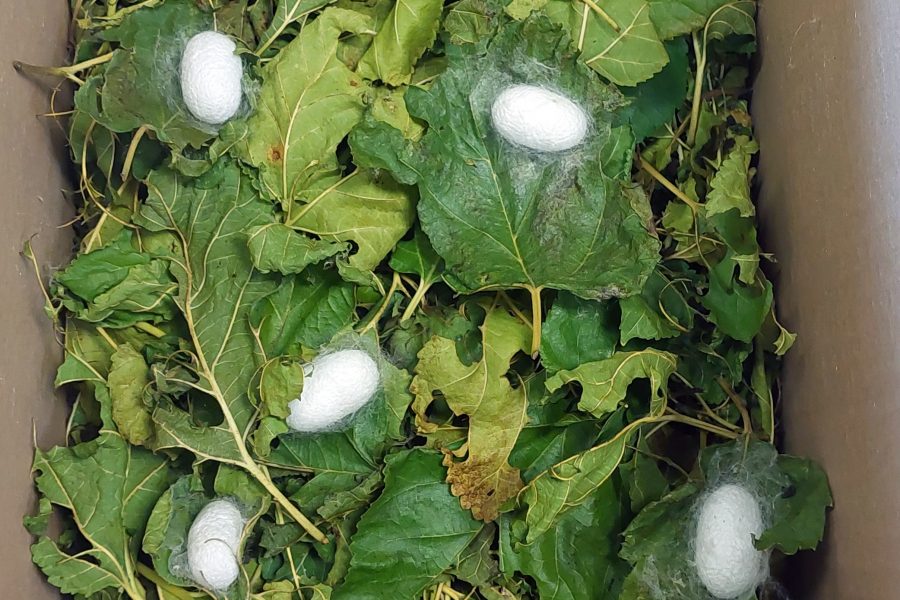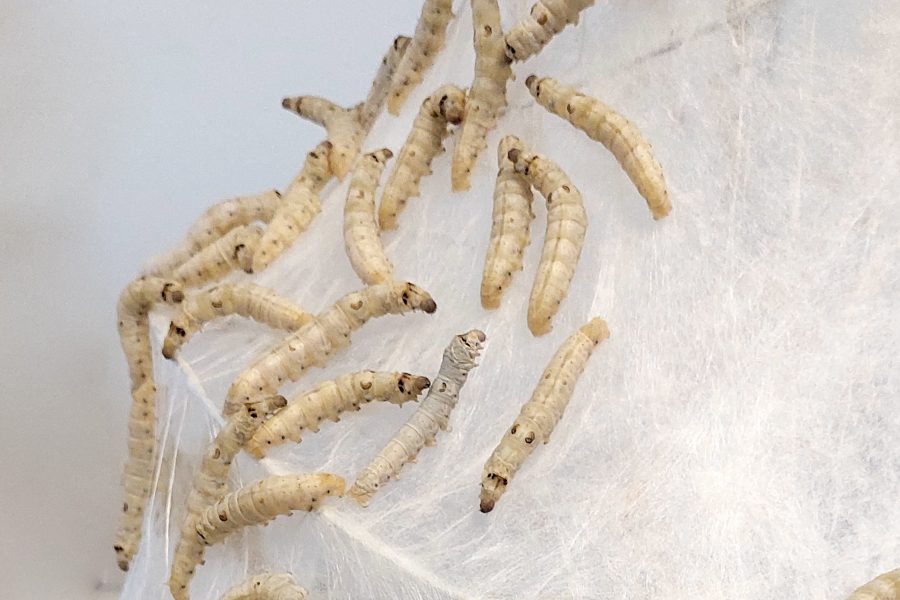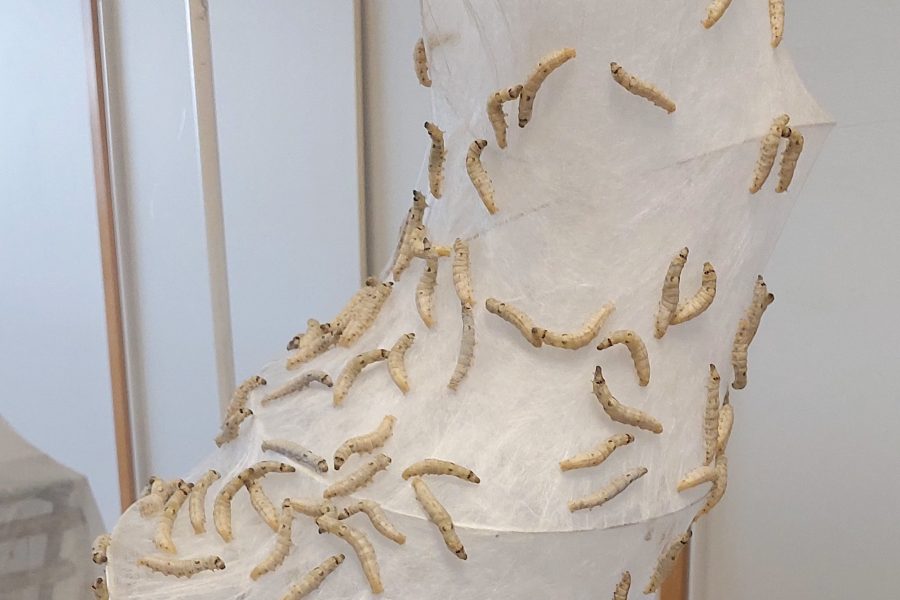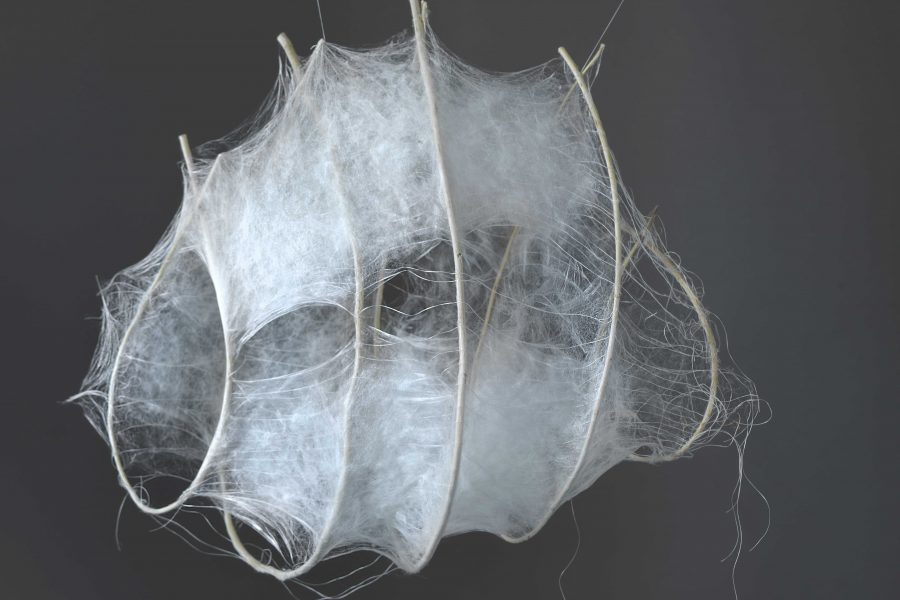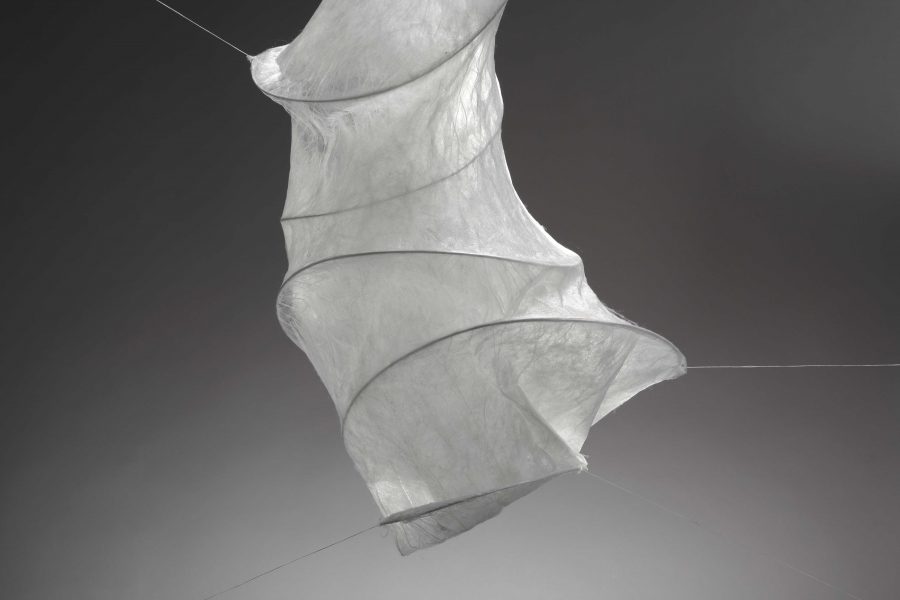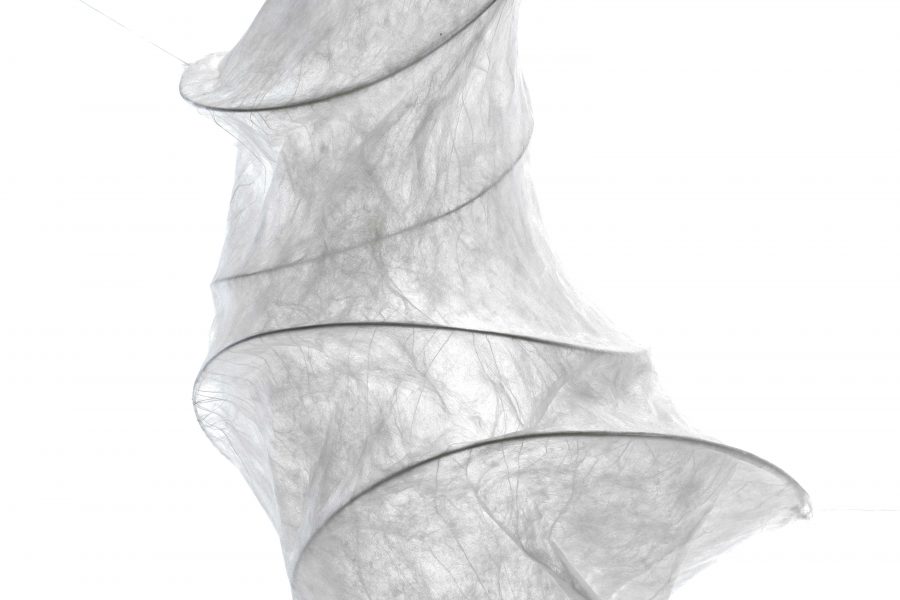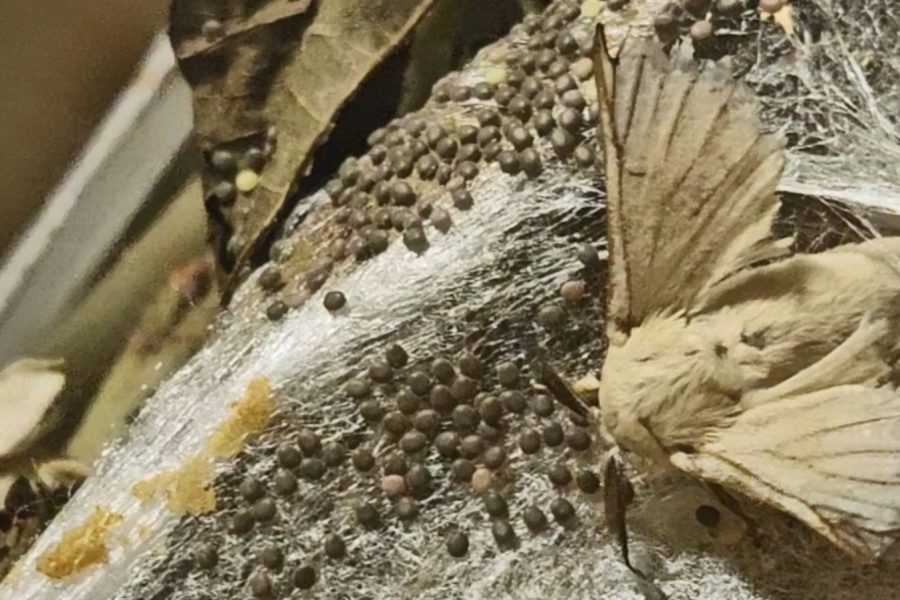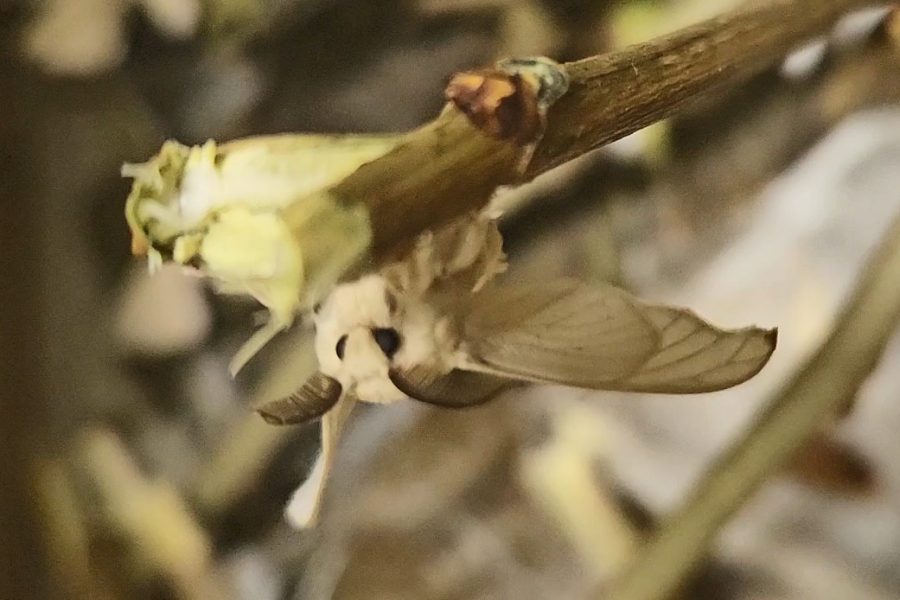The Faculty of Natural Sciences and Engineering, together with the Faculty of Veterinary Medicine, the Biotechnical Faculty, the Faculty of Mechanical Engineering and the Academy of Fine Arts and Design, successfully won the large interdisciplinary project New European Silk (NES) in the last quarter of 2024 at the University of Ljubljana’s call for proposals. Various disciplines intend to work together in the spirit of the new European Bauhaus to sustainably, inclusively and ecologically establish better and fairer conditions for the development of sericulture and silk production in Slovenia, and indirectly in Europe. In doing so, they also draw on local traditions with modern approaches to designing useful products and artistic practices.
The project group of textile technologists and designers at the UL NTF is researching different ways of obtaining silk. In addition to the already established unwinding of silk thread from cocoons, they are also devoting their attention to other, lesser-known processes that are more ethically advanced. The most suitable is flat spinning, where the silkworm caterpillars are left to their natural movements, with which they create a useful textile web, and then they still have enough strength to wrap themselves in a cocoon, in which they curl up and transform into butterflies. Only empty cocoons remain, which after degumming become valuable raw material for silk yarn, also useful for various purposes.
Right at the beginning of the NES project, in October 2014, we conducted the first experiment with flat spinning of silkworm caterpillars in the textile workshop at the UL NTF – an artistic performance with biomaterial. The silk web, which the caterpillars virtuously create, is extremely thin and uneven, barely visible in the initial stage. To strengthen it, it needs a supporting network of silk threads, with which we previously covered the skeletons of two different abstract bodies. We fed the caterpillars with mulberry leaves for several weeks so that they strengthened and matured. They began to raise their black heads like proud cavaliers. We found out that by raising and tilting their heads to the side, they throw invisible silk threads back and forth in the shape of a figure eight. These movements could be compared to a 3-D printer. When we moved the mature caterpillars onto the prepared skeletons, the caterpillars began their dance, unexpected and incredible. For several days and nights, they tirelessly wrapped the flat perimeters of both hollow spatial formations until they almost completely covered their supporting frameworks with silk. The abstract silk sculptures will be presented to the public for the first time in Solkan, the cradle of Slovenian sericulture, in June 2025 as part of the international textile biennial BIEN, as part of the events of the European Capital of Culture in the Goriška region.
